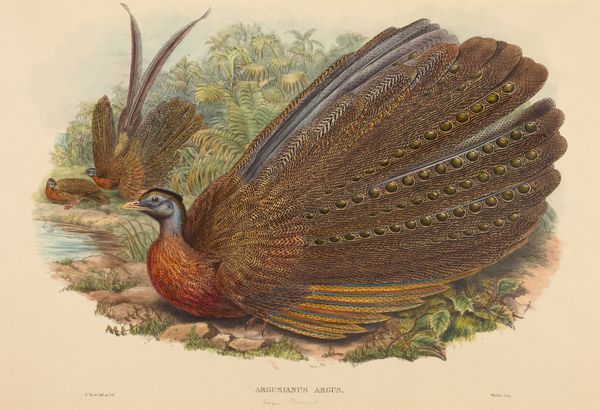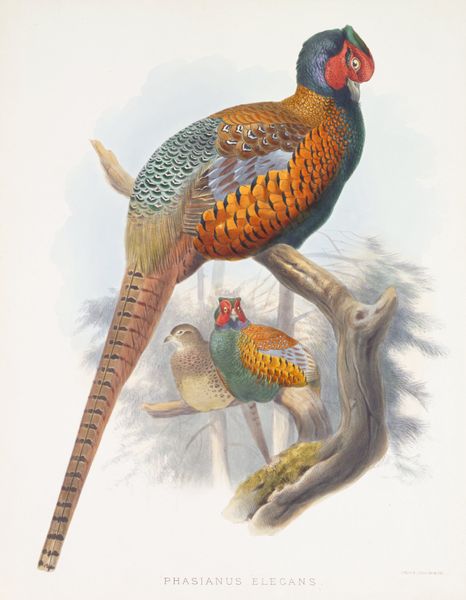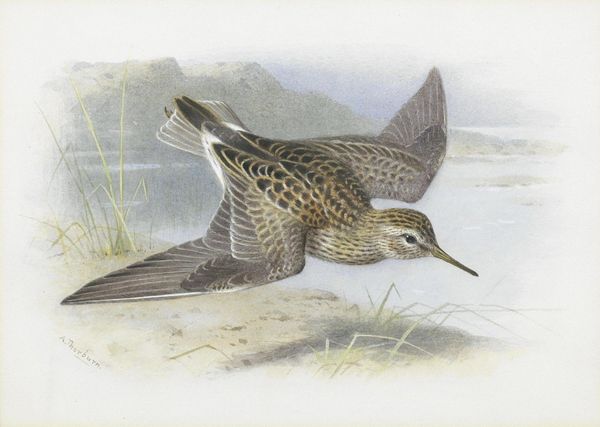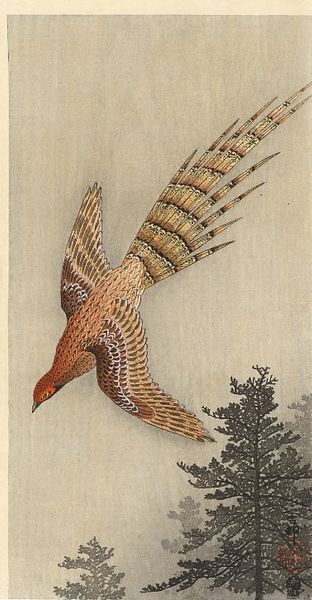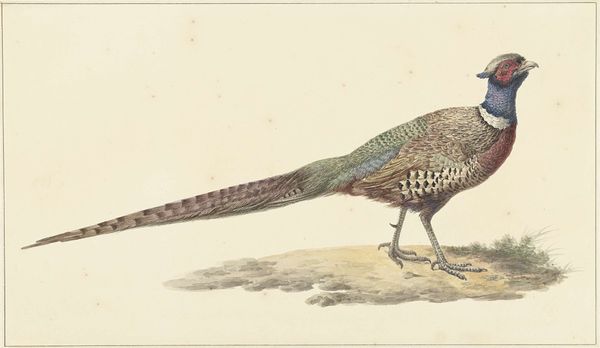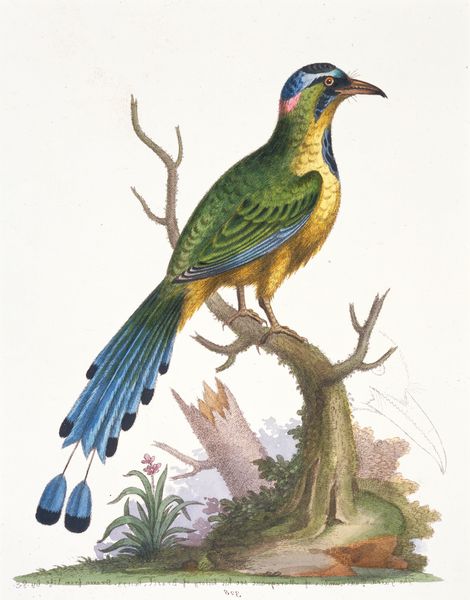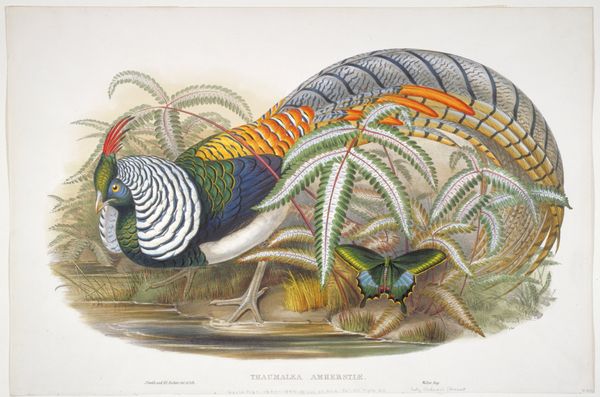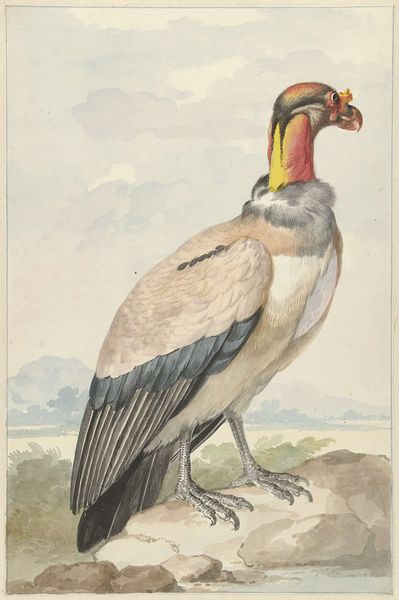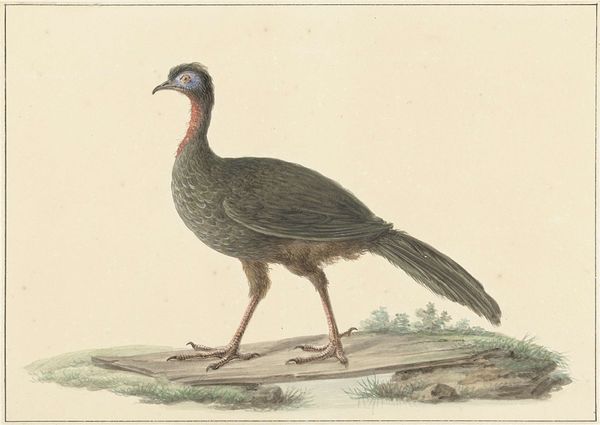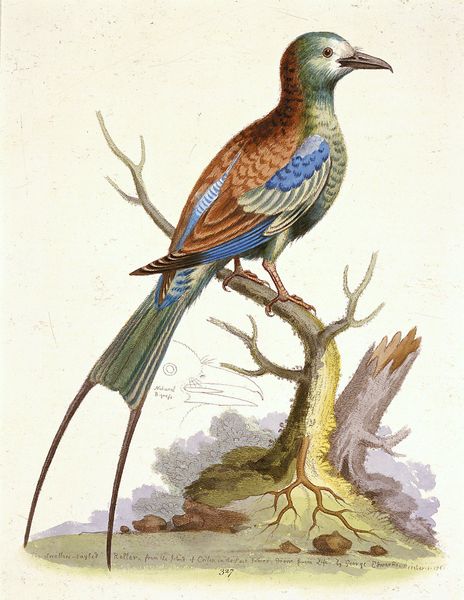
coloured-pencil, print, watercolor
#
coloured-pencil
# print
#
landscape
#
watercolor
#
coloured pencil
#
animal portrait
#
united-states
#
watercolour illustration
Dimensions: 16 x 21 3/4 in. (40.64 x 55.25 cm) (plate)
Copyright: Public Domain
Curator: I’m immediately struck by the meticulous detail; it's quite captivating. There's a rather palpable sense of order emanating from those perfectly arranged feathers. Editor: Indeed. Here we have Daniel Giraud Elliot's "Phadianidae. Argusianus Grayli," created between 1870 and 1872. It combines watercolor and coloured pencil, finished as a print. Its scientific purpose is palpable; how might that impact your perception? Curator: That context is useful; it shifts the image somewhat. There’s a palpable tension now between the artwork’s function as an objective study and its inherent aesthetic qualities. Look at how the watercolor washes create atmospheric depth—something purely artistic— even within this purportedly scientific rendering. Editor: The piece originates from a period when natural science illustrations like these were also entangled with colonial narratives and scientific exploration. Disseminating this ornithological knowledge served the dual purpose of documentation and asserting Western authority over the natural world. Curator: Of course! And one begins to consider this dynamic interplay of figure and ground—the meticulous depiction of the pheasant against what appears almost an abstraction of landscape, creating both clarity of form but perhaps alluding towards unknown ecological networks within its natural habitat. Do you see a symbolism there? Editor: Certainly. Consider also the cultural backdrop in the United States, from where Elliot hails. Such meticulousness, especially depicting the exotic "Argusianus Grayli" to appeal to public fascination in far-flung corners of empire, promoted ideologies and visions of America. Curator: Well, considering what we've discussed about observation and artistry, even if "Phadianidae. Argusianus Grayli" had remained solely on account of its formal organization with little grounding or knowledge related solely around colonialism influence; regardless that one will derive profound observations due primarily around objective intent! Editor: Perhaps—I'm mostly concerned to appreciate the work in context, given this "animal portrait" as a window of opportunity to understanding science intersecting art; while at alluding colonial projects through which many Western institutes thrived from.
Comments
No comments
Be the first to comment and join the conversation on the ultimate creative platform.
